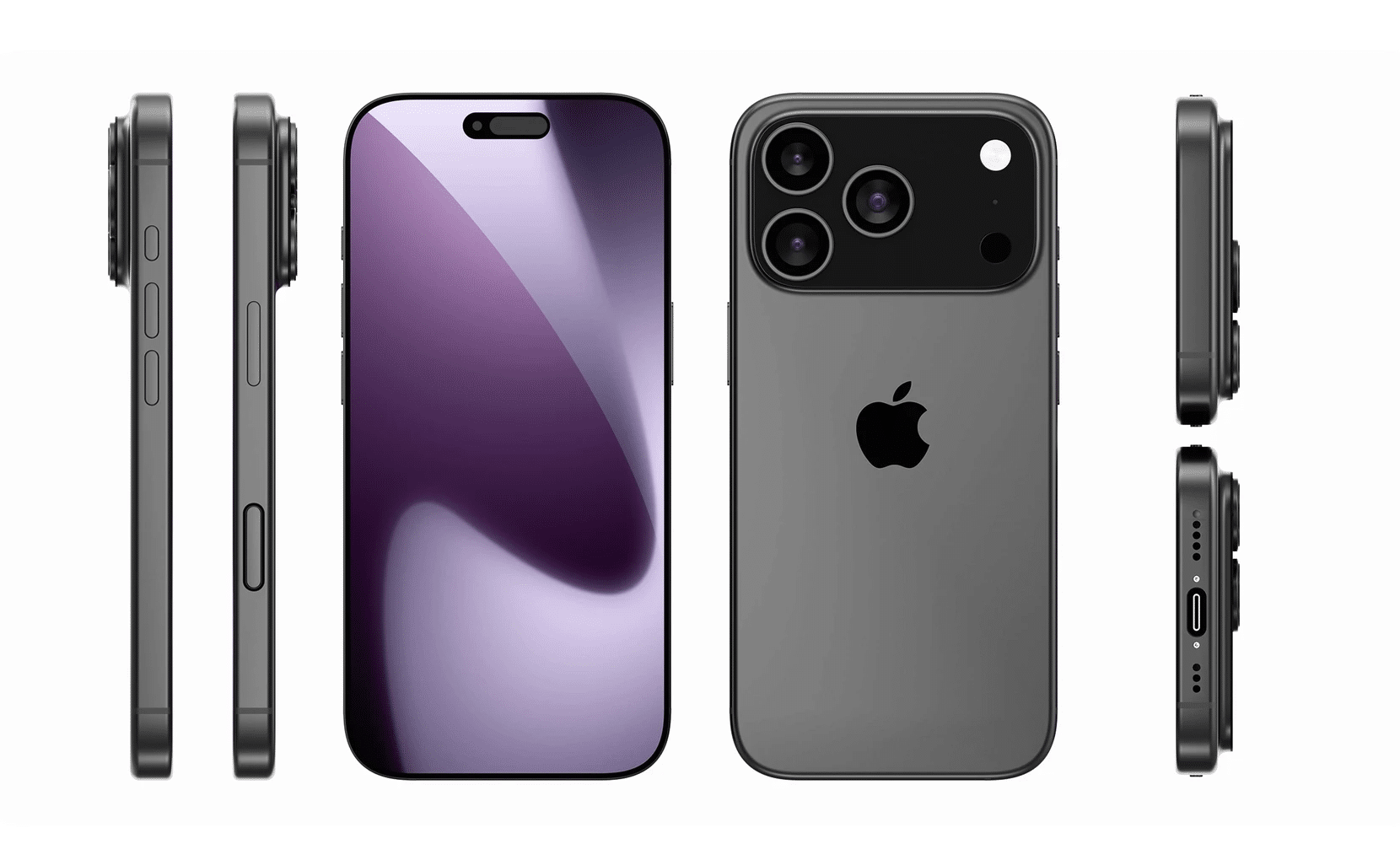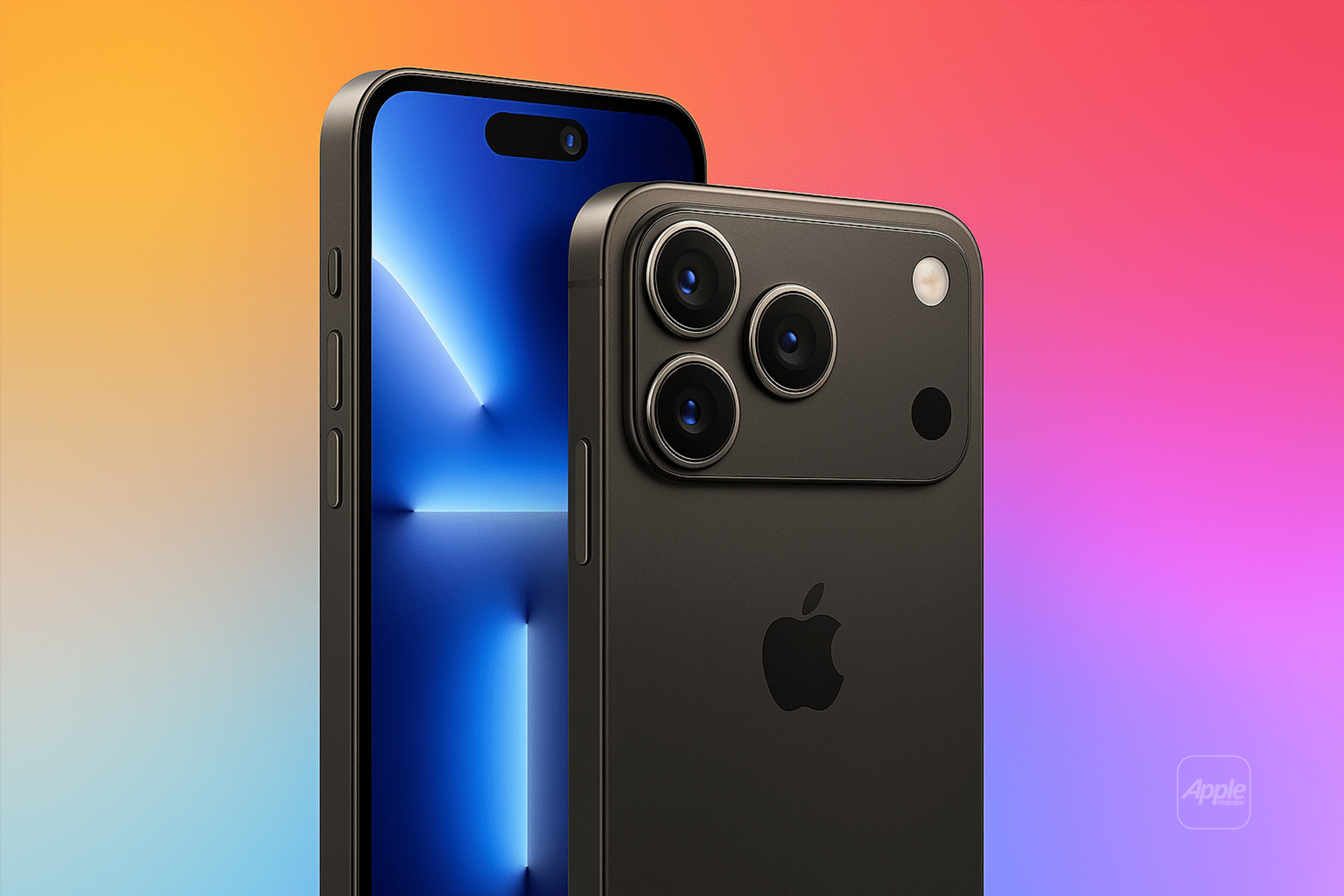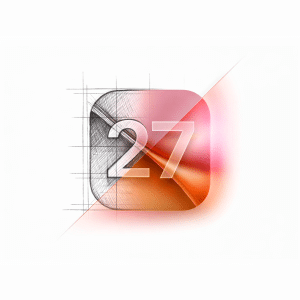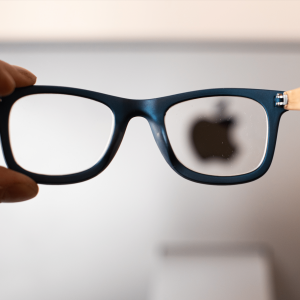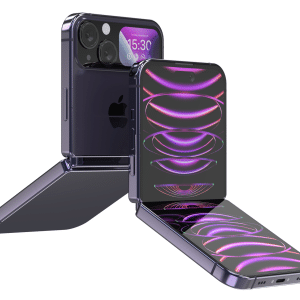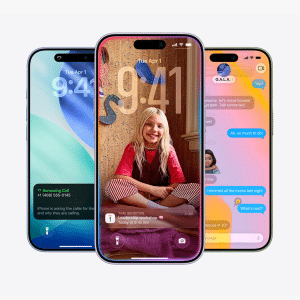The most striking visual change in the iPhone 17 Pro lineup is the redesigned rear camera module. Unlike the square camera island used since the iPhone 11 Pro, the new design features a horizontal, rectangular camera bar spanning the width of the device, reminiscent of Google Pixel’s signature look. This bar houses the familiar triangular arrangement of three 48-megapixel lenses—Wide, Ultra Wide, and Telephoto—positioned on the left, with the LiDAR scanner, microphone, and LED flash aligned vertically on the right. The larger camera bar may enable better thermal management for the advanced camera system or more efficient internal component layout, though Apple has not confirmed the functional benefits.
This redesign has stirred debate among fans, with some praising the fresh aesthetic and others questioning its departure from Apple’s iconic design language. The camera bar, constructed from aluminum and matching the device’s color, creates a seamless look, though early renders suggesting a two-tone design were debunked by Bloomberg’s Mark Gurman, who noted the bar will blend with the phone’s body for a unified appearance.
Enhanced Camera Capabilities
The iPhone 17 Pro models will boast significant camera upgrades, most notably a 48-megapixel Telephoto lens, up from the 12-megapixel version in the iPhone 16 Pro. This upgrade completes Apple’s transition to a triple 48-megapixel rear camera system, promising sharper images and greater flexibility for cropping without quality loss. One leaker suggests the Telephoto lens may offer 3.5x optical zoom (85mm equivalent) instead of the current 5x (120mm equivalent), potentially optimizing for portrait photography while still simulating 5x zoom through digital cropping.
Additionally, all iPhone 17 models, including the Pro, are expected to feature a 24-megapixel front-facing camera, doubling the resolution of the iPhone 16’s 12-megapixel selfie camera. This upgrade enhances image clarity, especially for social media and video calls. Rumors also point to potential support for 8K video recording and dual front-and-rear video capture, positioning the iPhone 17 Pro as a powerhouse for content creators.
Performance and Display Upgrades
Under the hood, the iPhone 17 Pro and Pro Max will be powered by the A19 Pro chip, built on TSMC’s third-generation 3nm process for improved efficiency and performance. The inclusion of 12GB of RAM, up from 8GB in the iPhone 16 Pro, will enhance multitasking and support Apple Intelligence features, ensuring smoother operation for AI-driven tasks like live translations and call screening. A vapor chamber cooling system is also rumored, promising better heat dissipation for sustained performance during intensive tasks like gaming or video editing.
The Pro models will retain their 6.3-inch and 6.9-inch display sizes, respectively, but all iPhone 17 models will feature ProMotion technology with a 120Hz refresh rate for smoother scrolling and animations. While earlier reports suggested a new scratch-resistant, anti-reflective display coating, supply chain challenges have reportedly delayed this feature. The Dynamic Island’s size remains contentious, with analyst Jeff Pu claiming a narrower design enabled by metalens technology for Face ID, while Ming-Chi Kuo insists it will stay unchanged.
A New Color and MagSafe Tweaks
The iPhone 17 Pro models are expected to introduce a Sky Blue finish, inspired by the M4 MacBook Air, adding a fresh hue to Apple’s typically muted palette. Other colors, such as purple or green, are also rumored, ensuring variety for consumers. The MagSafe magnet layout will see a slight repositioning, with the Apple logo lowered to accommodate the larger camera bar. While existing MagSafe accessories will remain compatible, faster charging speeds are possible with an updated MagSafe Charger, enhancing convenience for users.
This redesign reflects Apple’s intent to differentiate the Pro models visually and functionally while maintaining compatibility with its ecosystem. The larger battery in the iPhone 17 Pro Max, enabled by a slightly thicker chassis, addresses demands for extended usage, particularly for power users.
Setting the Stage for 2025
The iPhone 17 Pro and Pro Max mark a pivotal moment for Apple, blending bold design changes with cutting-edge technology. The aluminum frame, expansive camera bar, and enhanced camera system signal a confident evolution of the iPhone’s identity, catering to both aesthetic preferences and practical needs. As Apple continues to refine its hardware alongside software innovations like the Liquid Glass design in iOS 26, the iPhone 17 Pro lineup promises to deliver a compelling package for tech enthusiasts and professionals alike. With its launch just months away, the anticipation for Apple’s next flagship is palpable, setting a high bar for competitors in the smartphone market.
